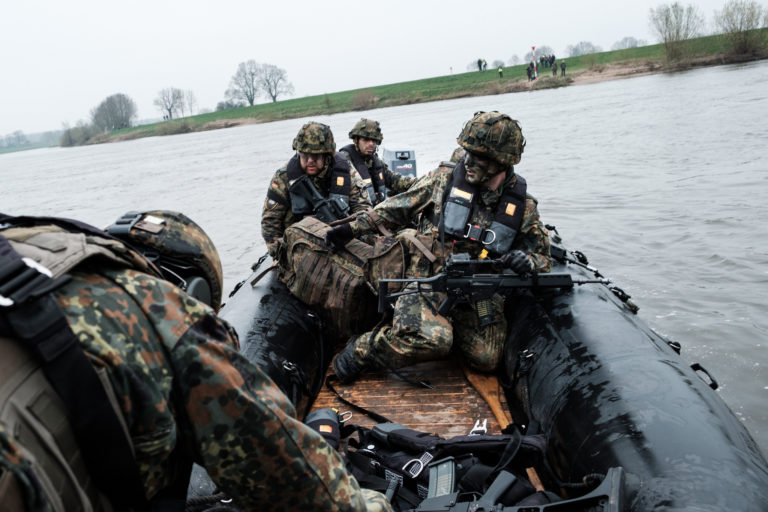Counting Dollars or Measuring Value: Troop Contribution as a Share of Total Active Duty Force
NATO: Counting Dollars or Measuring Value Series

Shifting the assessment of security investment from inputs to outputs would significantly advance the quality of NATO’s debate about national contributions. One of the most frequently discussed output metrics is troop contributions. Troop contributions as a measure of commitment to NATO is most often cited by those members that fall under the 2 percent threshold to demonstrate that they are contributing more effectively than some states that meet the threshold.
The CSIS report compiles NATO member and partner countries’ troop contributions across a range of military operations. Where data was publicly available and reliable, it measures troop contribution as a percentage of the total active duty force to normalize and compare between countries with militaries of different size. Participation in a broader range of military operations is examined in more detail in the report. In most NATO operations assessed in this report, leadership and troop contributions rotated among countries.[1]
Assessing troop contributions does appear to vindicate the argument that a singular focus on the 2 percent threshold overlooks significant investments in collective defense being made by some states. In all four phases of Afghanistan operations (which include NATO-led operations including the International Security Assistance Force, Operation Resolute Support, and the U.S.-led non-NATO Operation Enduring Freedom mission), Denmark ranked in the top seven contributors while Germany fell within the top eight contributors for three of the four phases. Denmark consistently earns plaudits for its contribution to NATO operations in Afghanistan and Libya, with its participation in the latter commended by Secretary Gates in his 2011 address to the NATO defense ministers.[2] Canada was also among the top two contributors of military personnel as a percentage of active duty force for the first two phases of operations in Afghanistan.
Greece, the second largest contributor in terms of defense expenditure as a share of GDP (by 2017 estimates), landed in the bottom quartile of troop contributions in three of the four phases in Afghanistan. Yet there are other small countries making the 2 percent of GDP mark for defense spending that are also top performers by the troop contribution metric. For the latter two phases of Afghanistan operations, for instance, NATO partner Georgia had the highest troop contribution as a share of its active duty force; Estonia also ranked in the first quartile for two phases.
However, there are some shortcomings to using troop contributions as a metric of allied and partner commitment to NATO. Deployments and missions may vary in type, their level of difficulty, the danger they pose to troops, or their financial cost. Alternative metrics that may account for these levels of specificity include the number of munitions expended, platforms used, sorties flown, or casualties incurred (though many make take issue with deaths and wounded as an appropriate measure). In other cases, countries may be precluded from participating in some operations based on geography or the types of platforms their militaries possess. This metric also fails to capture outcome: the ready capability of the forces deployed.
For more information on transatlantic security investment, see the authors’ full report Counting Dollars or Measuring Value: Assessing NATO and Partner Burden Sharing here or download the PDF version below.
Endnotes
[1] For a detailed list of the sources used to compile troop contributions, see the appendix of the report here.
[2] Robert M. Gates, Remarks by Secretary Gates at the Security and Defense Agenda, Brussels, Belgium; John Deni, “Burden Sharing and NATO’s 2 Percent Goal.”
Photo Credit: NATO

